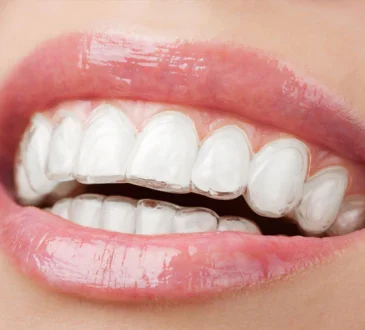
Maintaining oral health is vital for overall well-being, yet many of us ignore the early signs of dental problems. Delaying dental visits can lead to severe complications, from infections to tooth loss. Recognizing the warning signs can save you from pain and costly treatments. Here’s a detailed guide on 10 signs you need to see a dentist immediately to safeguard your oral health.
1. Persistent Toothache
A toothache isn’t just a nuisance; it could be a sign of an underlying issue like cavities, gum disease, or an abscess. If over-the-counter pain relief doesn’t help or the pain persists for more than a day, schedule an Orthodontist Katy TX appointment. Persistent tooth pain might also indicate nerve damage, requiring immediate attention to prevent further complications.
2. Swollen or Bleeding Gums
Swelling and bleeding gums, especially after brushing or flossing, are often early signs of gum disease, such as gingivitis or periodontitis. Ignoring these symptoms can lead to gum recession, bone damage, or even tooth loss. A dentist can provide professional cleaning and recommend treatments to restore gum health.
3. Loose or Shifting Teeth
Adult teeth should be firmly anchored. If you notice a tooth becoming loose or shifting positions, it could indicate advanced gum disease, bone loss, or trauma. This symptom requires urgent dental intervention to prevent permanent tooth loss.
4. Chronic Bad Breath (Halitosis)
Everyone experiences bad breath occasionally, but chronic bad breath that doesn’t improve with brushing, flossing, or mouthwash may signal an infection or decay. Conditions like dry mouth, gum disease, or even systemic health issues can contribute to halitosis. A dentist can pinpoint the cause and suggest effective treatments.
5. White Spots on Teeth
White spots on your teeth often signify early tooth decay. These spots occur when acids erode the enamel, the protective layer of your teeth. Early intervention by a dentist can help remineralize the enamel and stop decay before it progresses to cavities.
6. Sensitivity to Hot or Cold
If sipping hot coffee or enjoying ice cream causes discomfort, you might have sensitive teeth. Tooth sensitivity can result from enamel wear, exposed roots, or cavities. It could also indicate more severe issues like cracked teeth or deep decay. A dentist can assess the cause and suggest remedies like fluoride treatments or dental sealants.
7. Mouth Sores That Don’t Heal
Occasional mouth sores from biting your cheek or eating spicy food are common, but sores that persist for more than two weeks might indicate an infection or more serious conditions, including oral cancer. Dentists are trained to identify abnormal lesions and provide appropriate care or referrals if needed.
8. Pain or Clicking in the Jaw
Pain, discomfort, or clicking sounds when you open or close your mouth could point to temporomandibular joint (TMJ) disorders. TMJ issues can arise from grinding teeth, stress, or arthritis. A dentist can recommend treatments like bite guards, exercises, or other therapies to alleviate symptoms.
9. Dry Mouth
Saliva plays a crucial role in maintaining oral health by washing away food particles and neutralizing acids. Persistent dry mouth could result from medication side effects, dehydration, or conditions like diabetes. A dentist can help identify the cause and suggest solutions, such as saliva substitutes or lifestyle changes.
10. Unusual Changes in Your Teeth or Mouth
Any unusual changes, such as lumps, discoloration, or swelling in your mouth, tongue, or throat, warrant a dental visit. These changes could be harmless, but they might also signal infections or precancerous conditions. Early detection is crucial for effective treatment.
Why Acting Early Matters
Ignoring these signs can lead to more severe issues, including:
- Tooth Loss: Advanced decay or gum disease can result in losing one or more teeth.
- Infections: Untreated oral infections can spread to other parts of the body.
- Expensive Treatments: Early intervention is often more cost-effective than addressing advanced dental problems.
- Impact on Overall Health: Poor oral health is linked to conditions like heart disease, diabetes, and respiratory infections.
How to Prevent Dental Emergencies
While recognizing these signs is essential, prevention is the best approach. Here are some tips to maintain optimal oral health:
- Brush Twice Daily: Use fluoride toothpaste and a soft-bristled toothbrush.
- Floss Daily: Remove plaque and food particles from between your teeth.
- Eat a Balanced Diet: Limit sugary and acidic foods that erode enamel.
- Stay Hydrated: Water promotes saliva production and rinses away food particles.
- Regular Dental Checkups: Visit your dentist every six months for cleanings and exams.
Common Myths About Dental Visits
Myth 1: “If there’s no pain, there’s no problem.”
Fact: Many dental issues, like cavities or gum disease, develop silently. Regular checkups can catch problems early.
Myth 2: “Dentists are too expensive.”
Fact: Preventive care is far more affordable than emergency treatments or surgeries.
Myth 3: “Sensitive teeth are normal.”
Fact: Sensitivity is often a sign of an underlying issue. A dentist can recommend treatments to alleviate discomfort.
When to Seek Emergency Dental Care
Sometimes, waiting for a scheduled appointment isn’t an option. Seek immediate dental care for:
- Severe, unrelenting toothache
- Trauma causing tooth loss or fractures
- Uncontrolled bleeding in the mouth
- Swelling in the face or jaw
- Signs of infection, such as fever or pus
The Role of Advanced Dental Technology in Diagnosis and Treatment
Modern dentistry has evolved significantly, making dental care more efficient and less intimidating. When you visit a dentist, especially for urgent concerns, advanced technologies ensure accurate diagnosis and effective treatment. Here’s how they help:
- Digital X-Rays: These provide detailed images with minimal radiation exposure, helping dentists spot issues like cavities, infections, or bone loss.
- Intraoral Cameras: These allow dentists to view hard-to-see areas and educate patients about their oral health.
- Laser Dentistry: Used for treating gum disease, removing decay, and even performing biopsies with minimal pain or discomfort.
- 3D Imaging: This advanced technology helps in planning complex procedures like dental implants or orthodontics.
Choosing a dentist who employs advanced technology ensures faster, more comfortable treatments with better outcomes.
How to Overcome Dental Anxiety
Fear of visiting the dentist is common but shouldn’t deter you from seeking necessary care. Ignoring dental problems can worsen your health, so addressing anxiety is crucial. Here are strategies to manage dental fear:
- Communicate with Your Dentist: Share your concerns and ask them to explain the procedure in detail. A good dentist will be empathetic and ensure your comfort.
- Start with Simple Visits: Begin with cleanings or checkups to familiarize yourself with the environment and build trust.
- Relaxation Techniques: Practice deep breathing, meditation, or listen to calming music during your appointment.
- Bring a Supportive Friend: Having someone with you can reduce stress.
- Consider Sedation Dentistry: For severe anxiety, dentists offer sedation options like nitrous oxide or oral sedatives.
By addressing dental anxiety, you can prioritize your oral health without unnecessary stress or delay
Conclusion
Your oral health is a gateway to your overall health. Paying attention to these 10 signs you need to see a dentist immediately can save you from discomfort, costly treatments, and serious complications. Regular dental checkups, good oral hygiene, and early action are the pillars of a healthy smile.
Don’t wait for the pain to escalate—schedule a dental appointment today and take control of your oral health





